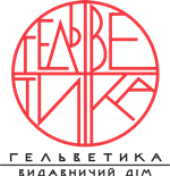APPLICATION OF JAPANESE TRADITIONAL METHODS FOR THE RESTORATION OF EUROPEAN PAPER
DOI:
https://doi.org/10.32782/uad.2023.4.1Keywords:
Japanese methods of restoration, karibari, paper, ink, deformation elimination, time capsule artefact.Abstract
The purpose of the article is to introduce the main features of the karibari method, which should expand the palette of tools for Ukrainian restorers to eliminate the base deformations for works of art made on paper. It is worth to refresh the discussion about how to preserve, develop and adapt the traditional restoration methods and their use internationally. Thus, traditional Japanese methods began to be actively used in the second half of the XX century, which had a positive impact not only on the overall development of conservation and restoration techniques and materials, but also on the popularisation of Japanese paper, as a World Cultural Heritage object. However, the specifics of the application of one of these traditional methods, the Japanese karibari technique, in the restoration of an XVIII-century paper-based artefact from a time capsule to eliminate persistent deformation are first highlighted in this article. The description, research and practical application of the karibari technique is important and has significant potential for the development of the national restoration industry as an effective method of eliminating deformation of heavily degraded, damaged, oriental paper, preserving various manufacturing techniques with a sensitive paint layer, etc. The use of the karibari technique has not yet been covered in scientific publications in our country in the context of restoration. The scientific novelty of the article lies in the introduction of the main features of this method. A comparative analysis is carried out between the experience in practical application of classical pressing and the above-mentioned Japanese method for eliminating deformations in order to preserve paper-based objects of cultural heritage.
References
Bachmann, K. (1983). The treatment of transparent papers: a review. The Book and Paper Group Annual. Roč. 2, 3–13.
Fraser J. A. (1988). Karibari – japanese drying screen, aiccm Bulletin, 14, 33–50. DOI: 10.1179/ bac.1988.14.3-4.002
Mizushima, K, K. (1984). The Use of Friction Mounting as an Aid to Pressing Works on Paper. веб-сайт. URL: https://www.semanticscholar.org/paper/The-Use-of-Friction-Mounting-as-an-Aid-to-Pressing-Keyes/11 59bb466b04bef66f0999e8f1cd1a16e7b59cf9 (дата звернення: 10.09.2023)
Lockshin N. and St. John K. (2003). Discussion Group Co-Chairs. Archives Conservators Discussion Group 2003: Flattening and Drying. Book and Paper Group Annual 22, 93–95.
Kato, M. and Kimishima, T. (2017) Karibari: The Japanese drying technique, in Adapt & Evolve 2015: East Asian Materials and Techniques in Western Conservation. Proceedings from the International Conference of the Icon Book & PaperGroup, London 8–10 April 2015 (London, The Institute of Conservation: 2017), 91–98.
Masuda K. (2006). Reflections on the spread of Japanese paper and conservation techniques, The Paper Conservator, 30, 7–9, URL: https://doi.org/10.1080/03094227.2006.9638429 (дата звернення: 05.09.2023)
Webber P. The use of Asian paper conservation techniques in Western collections in Adapt & Evolve 2015: East Asian Materials and Techniques in Western Conservation. Proceedings from the International Conference of the Icon Book & Paper Group, London 8–10 April 2015 (London, The Institute of Conservation: 2017), 12–27.
Practical Considerations for Humidification and Flattening Paper (2011). 62–76
Webber P. & Huxtable M. (1985). Karibari – the japanese drying-board. The Paper Conservator, 9, 54–60, DOI: 10.1080/03094227.1985.9638469







